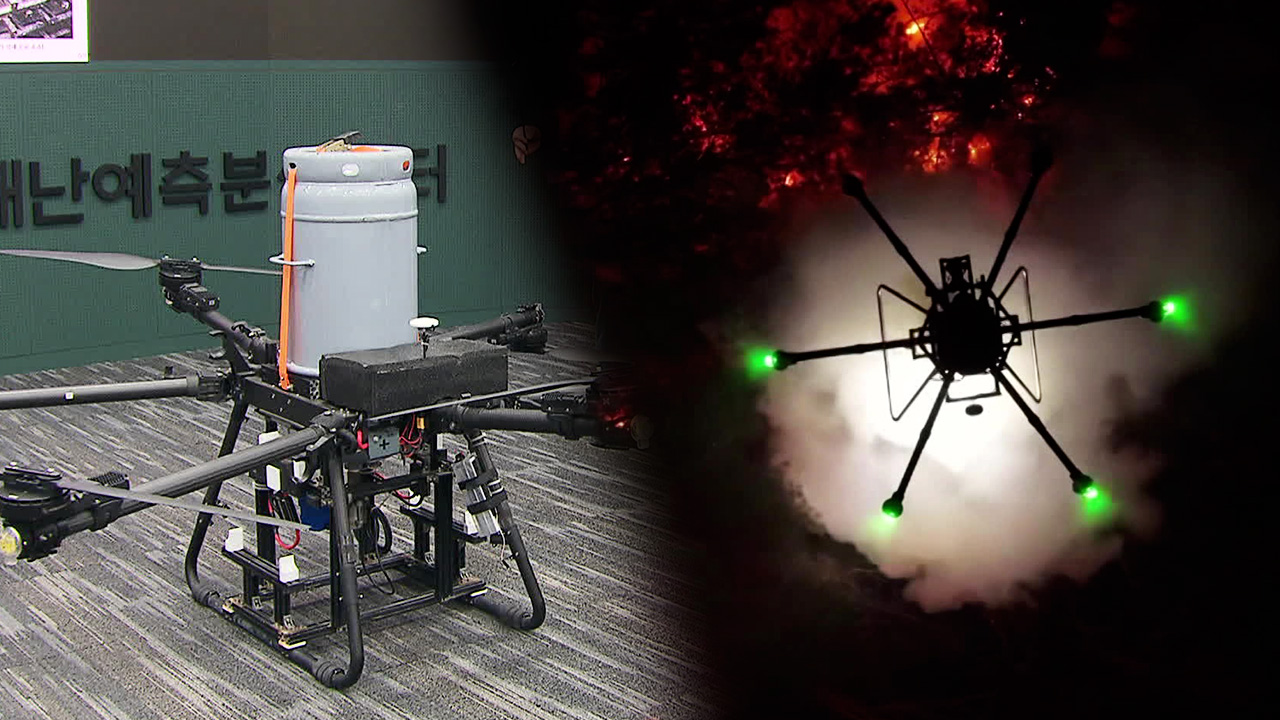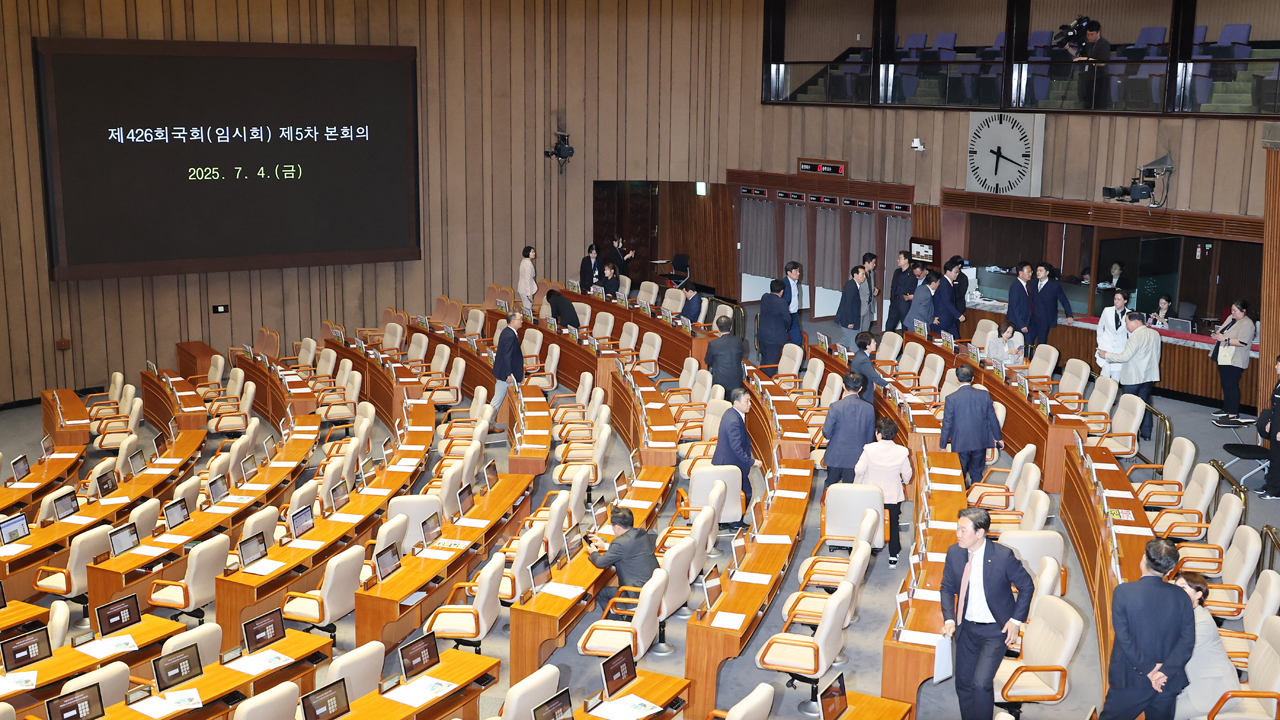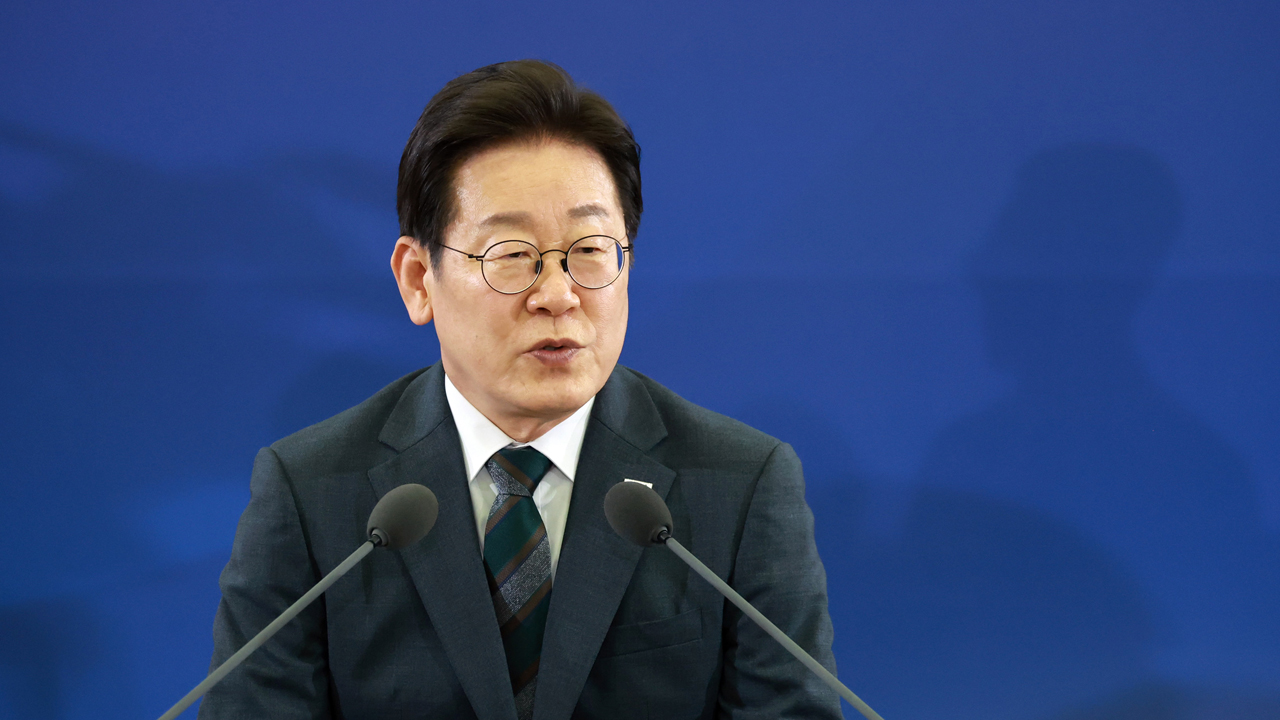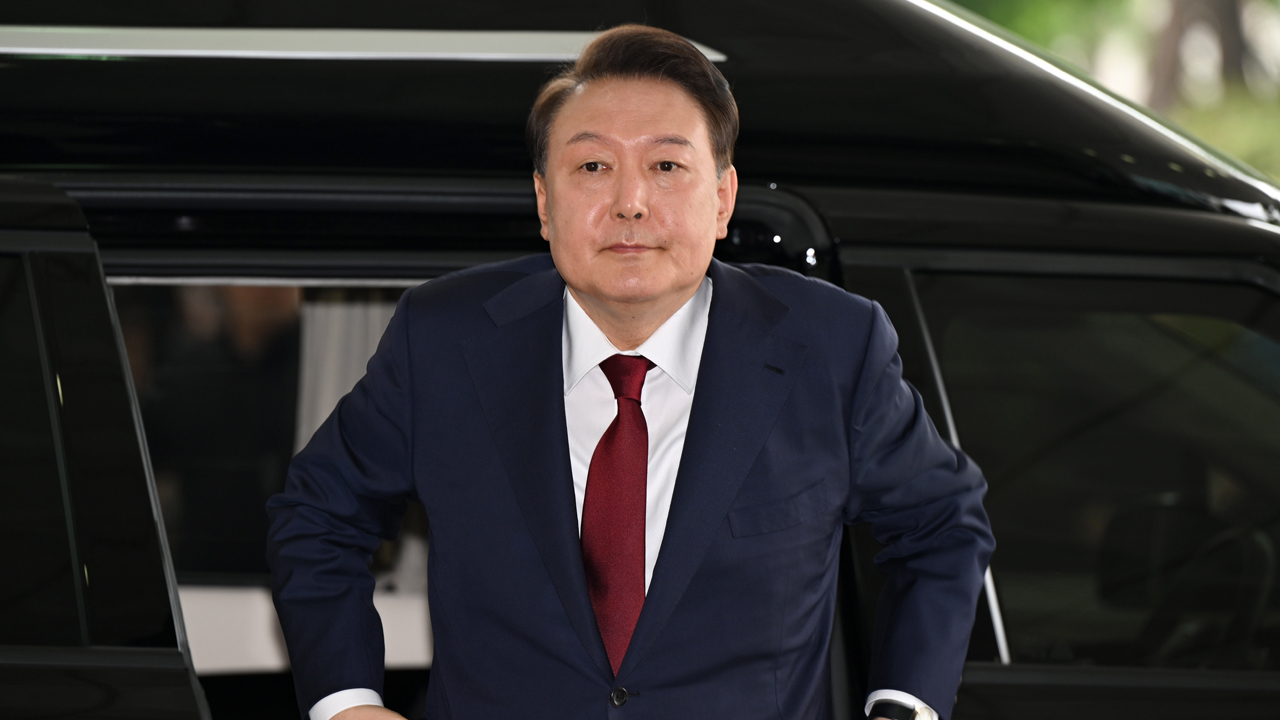Development of firefighting drones against wildfires to reduce risk of casualties
입력 2024.11.10 (01:39)
읽어주기 기능은 크롬기반의
브라우저에서만 사용하실 수 있습니다.
[Anchor]
There is nothing that drones cannot do.
Now they can even extinguish wildfires.
Unlike helicopters, firefighting drones can fly at night.
The risk of casualties is also relatively low.
Their firefighting skills are evolving by the day.
Reporter Lee Se-heum has the story.
[Report]
Firefighting helicopters continuously spray water onto the wildfire site.
The Korea Forest Service currently has 29 Russian firefighting helicopters, but 8 of them are inoperable.
This is due to difficulties in procuring parts because of the war in Ukraine.
[Im Sang-seop/Korea Forest Service Commissioner: "We are trying to maximize our operational rate by using various methods, such as exchanging parts or utilizing parts from helicopters that are planned to be decommissioned."]
As a solution to the shortage of firefighting helicopters, firefighting drones are gaining attention.
The firefighting drones, which were tested during the Uljin-Samcheok wildfire in 2022, can be used at night, unlike helicopters that are difficult to take off after sunset, and they pose less risk of casualties.
However, their firefighting capabilities are inferior to those of helicopters, and their operational time is limited due to battery capacity.
For this reason, recent improvements have involved increasing the size of the drones to spray a greater amount of extinguishing agents for a longer duration.
To enhance firefighting efficiency, specific extinguishing agents have been developed for these drones, and the method of spraying the powder agents has also been changed for a stronger discharge.
[Kwon Choon-geun/National Forest Science Institute Fire Research Division: "In wildfire suppression, the key is to spray a large amount of water and agents in a short time. We need to develop high-capacity drones and suitable containers as well."]
The Korea Forest Service plans to prioritize the use of improved firefighting drones for early wildfire suppression and cleanup of residual fires.
This is KBS News, Lee Se-heum.
There is nothing that drones cannot do.
Now they can even extinguish wildfires.
Unlike helicopters, firefighting drones can fly at night.
The risk of casualties is also relatively low.
Their firefighting skills are evolving by the day.
Reporter Lee Se-heum has the story.
[Report]
Firefighting helicopters continuously spray water onto the wildfire site.
The Korea Forest Service currently has 29 Russian firefighting helicopters, but 8 of them are inoperable.
This is due to difficulties in procuring parts because of the war in Ukraine.
[Im Sang-seop/Korea Forest Service Commissioner: "We are trying to maximize our operational rate by using various methods, such as exchanging parts or utilizing parts from helicopters that are planned to be decommissioned."]
As a solution to the shortage of firefighting helicopters, firefighting drones are gaining attention.
The firefighting drones, which were tested during the Uljin-Samcheok wildfire in 2022, can be used at night, unlike helicopters that are difficult to take off after sunset, and they pose less risk of casualties.
However, their firefighting capabilities are inferior to those of helicopters, and their operational time is limited due to battery capacity.
For this reason, recent improvements have involved increasing the size of the drones to spray a greater amount of extinguishing agents for a longer duration.
To enhance firefighting efficiency, specific extinguishing agents have been developed for these drones, and the method of spraying the powder agents has also been changed for a stronger discharge.
[Kwon Choon-geun/National Forest Science Institute Fire Research Division: "In wildfire suppression, the key is to spray a large amount of water and agents in a short time. We need to develop high-capacity drones and suitable containers as well."]
The Korea Forest Service plans to prioritize the use of improved firefighting drones for early wildfire suppression and cleanup of residual fires.
This is KBS News, Lee Se-heum.
■ 제보하기
▷ 카카오톡 : 'KBS제보' 검색, 채널 추가
▷ 전화 : 02-781-1234, 4444
▷ 이메일 : kbs1234@kbs.co.kr
▷ 유튜브, 네이버, 카카오에서도 KBS뉴스를 구독해주세요!
- Development of firefighting drones against wildfires to reduce risk of casualties
-
- 입력 2024-11-10 01:39:15

[Anchor]
There is nothing that drones cannot do.
Now they can even extinguish wildfires.
Unlike helicopters, firefighting drones can fly at night.
The risk of casualties is also relatively low.
Their firefighting skills are evolving by the day.
Reporter Lee Se-heum has the story.
[Report]
Firefighting helicopters continuously spray water onto the wildfire site.
The Korea Forest Service currently has 29 Russian firefighting helicopters, but 8 of them are inoperable.
This is due to difficulties in procuring parts because of the war in Ukraine.
[Im Sang-seop/Korea Forest Service Commissioner: "We are trying to maximize our operational rate by using various methods, such as exchanging parts or utilizing parts from helicopters that are planned to be decommissioned."]
As a solution to the shortage of firefighting helicopters, firefighting drones are gaining attention.
The firefighting drones, which were tested during the Uljin-Samcheok wildfire in 2022, can be used at night, unlike helicopters that are difficult to take off after sunset, and they pose less risk of casualties.
However, their firefighting capabilities are inferior to those of helicopters, and their operational time is limited due to battery capacity.
For this reason, recent improvements have involved increasing the size of the drones to spray a greater amount of extinguishing agents for a longer duration.
To enhance firefighting efficiency, specific extinguishing agents have been developed for these drones, and the method of spraying the powder agents has also been changed for a stronger discharge.
[Kwon Choon-geun/National Forest Science Institute Fire Research Division: "In wildfire suppression, the key is to spray a large amount of water and agents in a short time. We need to develop high-capacity drones and suitable containers as well."]
The Korea Forest Service plans to prioritize the use of improved firefighting drones for early wildfire suppression and cleanup of residual fires.
This is KBS News, Lee Se-heum.
There is nothing that drones cannot do.
Now they can even extinguish wildfires.
Unlike helicopters, firefighting drones can fly at night.
The risk of casualties is also relatively low.
Their firefighting skills are evolving by the day.
Reporter Lee Se-heum has the story.
[Report]
Firefighting helicopters continuously spray water onto the wildfire site.
The Korea Forest Service currently has 29 Russian firefighting helicopters, but 8 of them are inoperable.
This is due to difficulties in procuring parts because of the war in Ukraine.
[Im Sang-seop/Korea Forest Service Commissioner: "We are trying to maximize our operational rate by using various methods, such as exchanging parts or utilizing parts from helicopters that are planned to be decommissioned."]
As a solution to the shortage of firefighting helicopters, firefighting drones are gaining attention.
The firefighting drones, which were tested during the Uljin-Samcheok wildfire in 2022, can be used at night, unlike helicopters that are difficult to take off after sunset, and they pose less risk of casualties.
However, their firefighting capabilities are inferior to those of helicopters, and their operational time is limited due to battery capacity.
For this reason, recent improvements have involved increasing the size of the drones to spray a greater amount of extinguishing agents for a longer duration.
To enhance firefighting efficiency, specific extinguishing agents have been developed for these drones, and the method of spraying the powder agents has also been changed for a stronger discharge.
[Kwon Choon-geun/National Forest Science Institute Fire Research Division: "In wildfire suppression, the key is to spray a large amount of water and agents in a short time. We need to develop high-capacity drones and suitable containers as well."]
The Korea Forest Service plans to prioritize the use of improved firefighting drones for early wildfire suppression and cleanup of residual fires.
This is KBS News, Lee Se-heum.
-
-

이세흠 기자 hmm@kbs.co.kr
이세흠 기자의 기사 모음
-
이 기사가 좋으셨다면
-
좋아요
0
-
응원해요
0
-
후속 원해요
0















이 기사에 대한 의견을 남겨주세요.